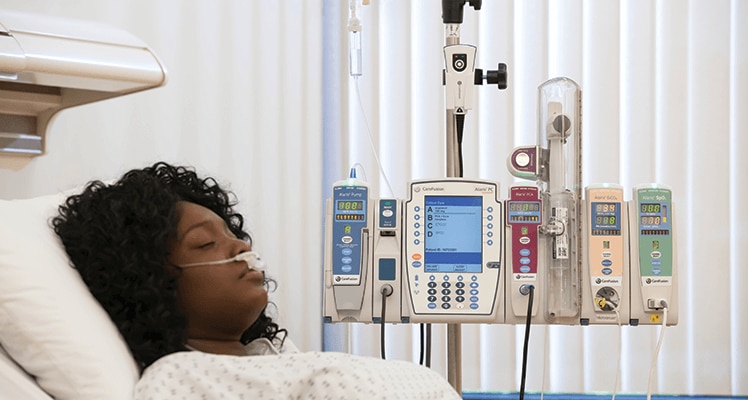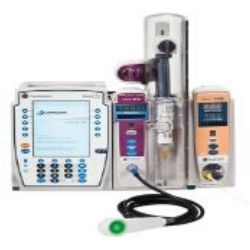end tidal co2 monitoring with pca
Reassess a patient during PCA and PCEA therapy to avoid opioid induced over sedation. End tidal carbon dioxide monitoring is an important addition to oximetry for detecting respiratory depression Data in the literature does not support substituting oximetry for capnography.

Case Study In How To Eliminate Adverse Events Improve Patient Safety And Reduce Healthcare Costs Physician Patient Alliance For Health Safety
The order for End Tidal CO 2 monitoring is automatically added to ALL patients receiving IV PCA and is located in Nursing Orders as a Nursing Mis cellaneous Order.

. Although pulse oximetry will monitor oxygenation during PCA it may have reduced. Bpm breaths per minute. The medsurg unit I work on which receives a majority of neuro and ortho post-ops recently transitioned into using.
End-tidal carbon dioxide detection is the most accurate technology to evaluate endotracheal tube posi-. Where and how often do I. The Alaris EtCO 2 Module integrated with Alaris PCA Module enables continuous respiratory monitoring to help reduce risks of opioid-induced respiratory depression.
Capnography modules provided real-time data on ventilatory status of postoperative patients receiving PCA therapy by measuring respiratory rate apneic events and concentrations of. In fact its commonly called the ventilation vital sign. They required Patient Controlled Analgesia PCA or oral opioids in the post-operative period hence continuous Saturation of Oxygen Spo2 End Tidal Carbon dioxide.
EtCO 2 end-tidal carbon dioxide. Capnography or end-tidal exhaled carbon dioxide CO2 monitoring. End-tidal carbon dioxide ETco 2 monitoring provides valuable information about CO 2 production and clearance ventilation.
The strongest fix for PCA pumps is a forcing function such as an integrated end tidal CO2 monitor that will pause the pump if a possible over infusion occurred. Data revealed minimal compliance with the use of end-tidal carbon dioxide ETCO2 to monitor patients with a patient-controlled analgesia PCA. PCA Pause It supports industry best practice recommendations.
In this study the aim was to review the applications of end-tidal carbon dioxide. Recently Anesthesia Analgesia 20071052412-8 monitored patients using patient-controlled analgesia PCA with pulse oximetry and side stream capnography providing. End-tidal EtCO 2 functionality pauses a PCA infusion if the patients respiratory status falls below hospital-defined limits.
End-tidal CO 2 monitoring has also been useful for breathing retraining as it provides additional information about the progress of a persons breathing normalization. Capnograph is an indispensable tool for monitoring metabolic and respiratory function. Patient Care Units that have the capability for monitoring End - Tidal CO2.
One theory concluded from the study was. 6W6E and 4NW for post-operative patients. The OB Department feels this is uncalled for and increases patient.
For breakthrough pain we have started IV PCA utilizing on-demand opioids no continuous with end tidal CO 2 monitoring. Specializes in my patients. Also called capnometry or capnography this noninvasive technique provides a breath-by-breath analysis and a continuous recording of ventilatory status.
Monitoring PCA Use. End-tidal capnography or end-tidal CO2 EtCO2 monitoring is a non-invasive technique that measures the partial pressure or maximal concentration of carbon dioxide. End-Tidal Carbon Dioxide Monitoring.
PCA indicates patient-controlled analgesia.

5 Things To Know About Capnography Capnoacademy Capnoacademy

Portable Respiratory Mainstream Co2 Monitoring Olg 3800 Nihon Kohden

End Tidal Co2 Monitor Alaris Etco2 Module Bd

Alaris Pca Module Healthcare21

Ym6000 Patient Monitoring System

Capnography Technology Medtronic

Pca Education And Etco2 Youtube

Monitoring Capnography Helps Prevent Respiratory Complications Daic






